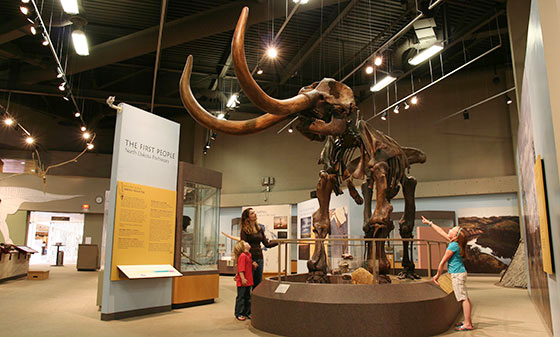
By Michael Bennett
Local Journalism Initiative
The Ridgetown Independent
A local group is seeking donations from residents in the Highgate and East Kent area to cover the additional cost of erecting a historical plaque by the Chatham-Kent Heritage Network.
The unveiling of a plaque commemorating the Highgate Mastodon is tentatively scheduled for Oct. 5 at the farm east of the village where a skeleton was unearthed close to 140 years ago.
The Highgate Mastodon plaque will be the ninth historical marker installed by the Chatham-Kent Heritage Network.
Two plaques were dedicated in the local area in the spring.
Ceremonies were held in Thamesville for a plaque commemorating the Ferguson Opera House and in Rondeau to highlight the Craford Settlement, established in 1811 by Margaret and John Craford, the first European settlers along the Lake Erie shoreline in Chatham-Kent.
The Heritage Network’s first plaque was placed at Stirling Park in Chatham last November to honour the 1934 Coloured All-Stars, the first all-black baseball team to win an Ontario senior men’s championship.
Other plaques installed this year were in Erieau (Revellers and the Railroad: Erieau’s Beginnings), Jeannette’s Creek (the 1854 train disaster that killed 50 people), Mitchell’s Bay (the commercial fishing industry), Wallaceburg (the glass factory), and Merlin (the village’s founding families).
The last plaque for 2024 will be in Blenheim, with the location and date to be announced.
The Heritage Network expects to place a historical plaque in Ridgetown in 2026 to avoid conflicting with the community’s 150-year celebration in 2025.
Local historians Lisa and Jim Gilbert founded the CKHN to connect with organizations in communities across Chatham-Kent for input to determine a significant historical period to be recognized with a plaque.
The Heritage Network’s plaque project is mainly financed through the Hydro One Community Fund, which Mayor Darrin Canniff and councillors administer for projects in their wards.
Each community, however, must come up with additional money to help cover expenses.
Jean Gillard and Marg Eberle are conducting the fundraising for the Highgate Mastodon plaque.
Some of the communities where plaques have already been placed were able to secure one or two major donors to cover the additional cost.
Gillard and Eberle, however, would prefer to see several local residents make smaller donations rather than seek one or two major donors.
“We’d like to get as many people as possible to make a donation, anywhere from $25 to $100, whatever they can afford,” Gillard said. “By getting smaller donations from a lot of people, they will feel like they have more ownership in the project.”
Lisa Gilbert said the plaque is almost complete and ready for installation.
The plaque would tell the story of the Highgate Mastodon, complete with text and photos to inform local people and tourists about an event in local history.
The ceremony will take place at the site just out of Highgate on Goodbrand Line, where, in the spring of 1886, William Reycraft uncovered some odd, large bones while digging a drainage ditch on his uncle’s farm.
“It created a minor, local sensation that they found these bones,” Gilbert said.
The bones sat in a barn on the farm until 1890 when John Jelly and William Hillhouse, from the Orangeville area, heard about the discovery.
“They were promoting a mastodon that was found in their area when they heard about the one in Highgate,” Gilbert said.
Jelly and Willhouse paid $25 for the excavation rights, and in one day, they filled two wagon loads with large bones.
It was estimated that 95 per cent of the skeleton was intact, making it the largest and most complete fossilized skeleton of an extinct animal ever found in North America at that time.
Gilbert said that when Reycraft saw what was unearthed, he offered to repurchase the bones, but Jelly and Willhouse said they wouldn’t sell the bones, “not even for $3,000!”
Jelly and Hillhouse displayed the bones across Ontario from 1890-92 before hiring Robert Essery to take the bones on a tour across Western Canada for $50 a month.
While on tour, Essery died of typhoid fever in Edmonton, and the Highgate Mastodon bones were mysteriously lost.
The bones ended up in storage at the Bibb Corn Broom Company in Minneapolis around 1893. There, they were eventually sold to Harry Dickinson, who exhibited them throughout Minnesota, South Dakota, and North Dakota from 1895 to 1898.
Meanwhile, Hillhouse received a poster from his niece in Neche, N.D., promoting a travelling exhibit that matched the description of the Highgate Mastodon.
“Jelly and Willhouse were still trying to find the bones since they belonged to them, but they weren’t successful,” Gilbert said.
James Grassick bought the skeleton from the Dickinson Family for $10 in 1898 and loaned the bones to the University of North Dakota in 1902 to go on display.
The bones, however, were stored until 1947, when they were shipped to Bismark, N.D., and soon forgotten until 1974, when they were rediscovered in a University of North Dakota storage facility.
In 1991, the North Dakota Heritage Center was making plans for a permanent exhibit called The First People: North Dakota Prehistory as committee members expressed interest in having a reconstructed megafauna, such as an ancient bison or mammoth, for the display.
Mark Halvorson, a curator, told the committee about the bones in storage.
About 80-85 per cent of the skeleton remained, and it took just over a year for Hoganson, with the assistance of paleontologist George Lammers of Winnipeg, to reconstruct the nearly 10-foot-tall mastodon.
The Highgate Mastodon still stands today in the main hall of the North Dakota Heritage Center.
“It’s still known as the Highgate Mastodon,” Gilbert said. “People in Chatham-Kent have tried to get them back, but they’re not interested in sending them back here.”
If anyone is interested in making a donation to the Highgate Mastodon Plaque, they can contact Jean at 519-674-3546 or Marg Eberle at 519-678-3289.






